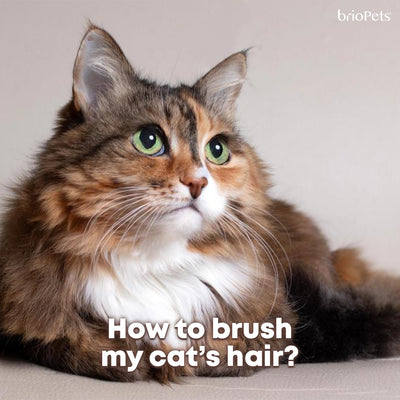
Which type of brush should I use on my cat’s coat?
Short haired cat and long haired cats require different brushes.

For a short haired cat, all you need is to brush your cat once weekly with a slicker brush. A slicker brush is a curved or slanted brush with very thin teeth to remove dander and loose hair.
Whereas long haired cats shed year-round and require a slicker brush, toothed comb, and de-shedding tool. They also require daily brushing to keep their hair under control. A comb helps remove tangles and loose hair, while a de-shedding brush removes loose hair and undercoat. The undercoat is the layer of hair that grows closest to their skin and keeps the cat warm. Cats shed their undercoats during warmer temperatures and a de-shedding brush can be very helpful.
How to safely brush cat’s hair?

1. Allow your cats to be acquainted with the brush
Hold the brush up in front of your cats, allow them to smell and rub against the brush so that they get used to the feel of the object. This will help to make the process less frightening and will build up their confidence.
2. Start with your cats’ back
Begin by stroking your cats. Once they seem relaxed, start brushing with long, slow, gentle strokes down their back, as this is usually the area they like the most. Allow them to move away from you without restraint and pause if they begin to show signs of discomfort or aggression. Give your cats lots of praises and encouragements whilst you brush them to help make the experience positive.
3. Move on to the other parts once your cats show signs of comfort
If your cat appears to be comfortable, you can start brushing the sensitive areas, such as the stomach, legs and head. You want to brush in the direction of the hair growth otherwise your cat may feel uncomfortable.
4. End with pats, praises and treats

Once you have finished brushing them, give your cat some time to relax and rest. You want your cat to associate brushing with a positive experience. Give your cat a treat as a reward and slowly they will enjoy the experience.
Are you ready to start your grooming journey with your cats? Check out our full range of quality brushes for efficient grooming. Make sure to have regular brushings and bonding sessions with your cats!
brioPets is proud to be the sole distributor of LILA LOVES IT products in Singapore. You can explore an extensive range of pet care products here - LILA LOVES IT.











